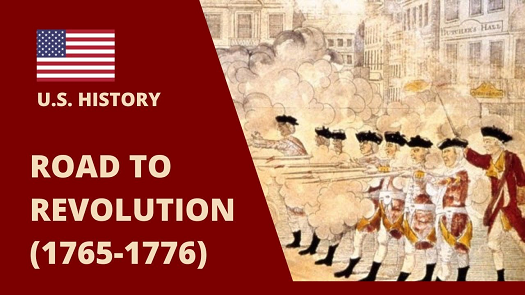Unit 2: Road to Revolution (1764-1788) Overview
Unit 2: Road to Revolution (1764-1788)

Unit 2: Road to Revolution (1764-1788)

Unit 2: Road to Revolution (1764-1788)
The American Revolution refers to the period during the last half of the eighteenth century in which the Thirteen Colonies that became the United States of America gained independence from the British Empire.
In this period, the colonies rebelled against Britain and entered into the American Revolutionary War, also referred to (especially in Britain) as the American War of Independence, between 1775 and 1783. This culminated in the American Declaration of Independence in 1776, and victory on the battlefield in 1781.
France played a key role in aiding the new nation with money and munitions, organizing a coalition against Britain, and sending an army and a fleet that played a decisive role at the battle that effectively ended the war at Yorktown.
The revolution included a series of broad intellectual and social shifts that occurred in early American society, such as the new republican ideals that took hold in the American population. In some states sharp political debates broke out over the role of democracy in government. The American shift to republicanism, as well as the gradually expanding democracy, caused an upheaval of the traditional social hierarchy, and created the ethic that formed the core of American political values.
The revolutionary era began in 1763, when the military threat to the colonies from France ended. Adopting the view that the colonies should pay a substantial portion of the costs of defending them, Britain imposed a series of taxes that proved highly unpopular and that, by virtue of a lack of elected representation in the governing British Parliament, many colonists considered to be illegal. After protests in Boston the British sent combat troops. The Americans mobilized their militia, and fighting broke out in 1775. Loyalists composed about 15-20 percent of the population. Throughout the war the Patriots generally controlled 80-90 percent of the territory, as the British could only hold a few coastal cities. In 1776, representatives of the 13 colonies voted unanimously to adopt a Declaration of Independence, by which they established the United States of America.
The Americans formed an alliance with France in 1778 that evened the military and naval strengths. Two main British armies were captured at Saratoga in 1777 and Yorktown in 1781, leading to peace with the Treaty of Paris in 1783, with the recognition of the United States as an independent nation bounded by British Canada on the north, Spanish Florida on the south, and the Mississippi River on the west.
This unit emphasizes significant military and political events that took place before and during the American Revolution and defined the Constitutional period.
Unit Focus
- Beginnings of the American Revolution
- Purposes of the First Continental Congress
- Purposes of the Second Continental Congress
- Basic principles of the Declaration of Independence
- Major events of the Revolutionary War
- Basic principles of the Articles of Confederation
- Results of the Constitutional Convention of 1787
Vocabulary
Lesson Reading
Videos and Interactives (Click on Images to View Content)

